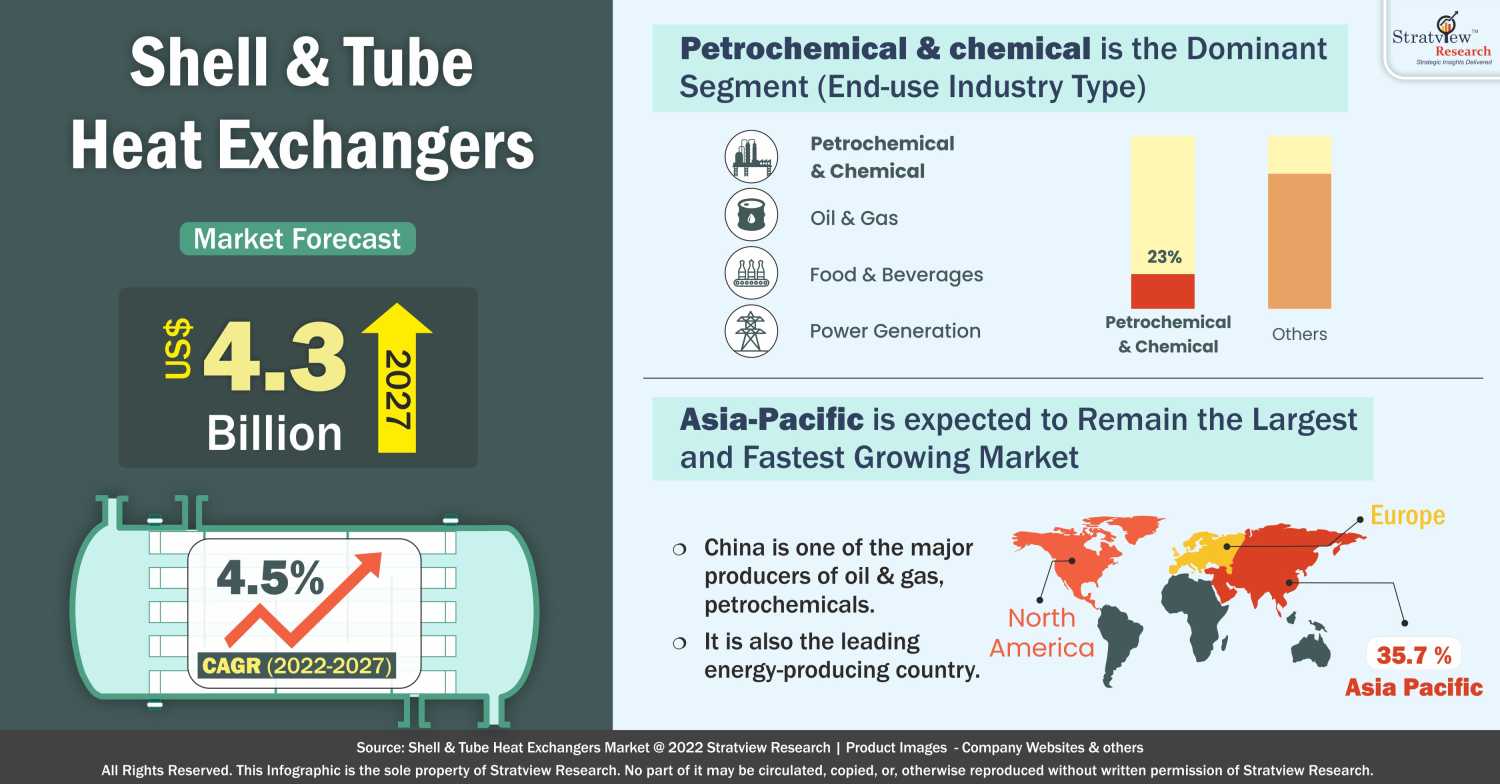Shell & tube heat exchangers are among the most popular heat exchanger types because of their simple design and exceptionally efficient heat exchange rate. They are made up of a series of tubes that are housed inside the shell. The heat exchanger is designed in such a way that one fluid flows through the smaller tubes, whereas another flows around it. The fluids can be liquids or gases on either the shell or tube sides. The performance of major demand generators, such as petrochemical & chemical, power generation, HVAC, and oil & gas, has a significant impact on the demand for heat exchangers and their types. The global shell & tube heat exchangers market suffered a precipitous decline of 12.5% in 2020 in the wake of the COVID-19 pandemic. The majority of end-use industries experienced supply chain disruption, cash flow constraints, and temporary shutdowns in manufacturing facilities, resulting in lower demand for heat exchangers.
In 2021, the market experienced growth, owing to the combined effects of recovery in production activity of the oil & gas, petrochemical & chemical, power generation, and HVAC segments, as well as the economic recovery, an abrupt increase in raw material prices, and rising investment and expansion of various projects. The shell & tube heat exchangers market is estimated to grow at a healthy CAGR of 4.5% during the forecast period, to reach a value of US$ 4.3 Billion in 2027.

Our Clients